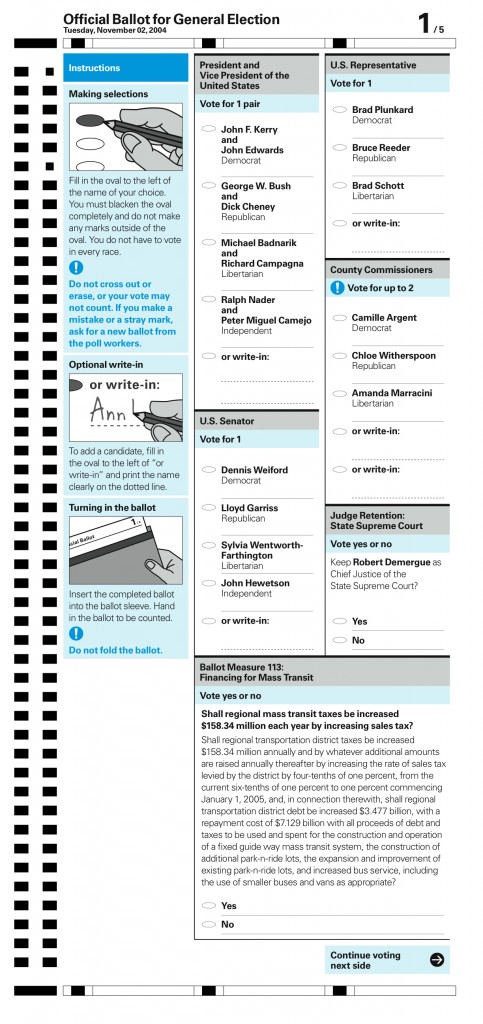Two Ballots, New Ballots
Following a previous post with before-and-after pictures of an ideal "re-modeling"of a ballot, I have a couple notes about how such remodeling is harder in practice; another ballot image to illustrate; and some good news about on-going TTV work on ballot image processing. That ideal remodeling showed how to both fix one of class of usability flaws (visually "losing" some of the candidates in a race), and typical approach to increase accessibility, abandoning the eye-crossingly stark and skeletal black-and-white layout for one with colors, shading, fonts, and space to help visually separate distinct elements and visual highlight important elements. But the the "after" picture is idealistic in two ways.
[1] The full range of accessibility issues is much larger. To get an idea of the how much larger -- for example, variations on one color or two, one language or two, paper size, placement of instruction text -- check out part of the results of the AIGA work on ballot design. Or, take a look at the below sample image, which shows some of the fruit of two years of expert input and testing -- which we at TTV are very fortunate to be able to leverage!
[2] The intended use of these images is to be printed as paper ballots that are marked by voters (manually or with digital assistance) and can be counted by an optical scanner. The previous "after" picture lacked the big visual mess of a bunch of black rectangles that leapt to the eye much more than the actual ballot information - needed for an optical scanner to orient the ballot image and find the marks. The AIGA sample below has these "timing marks" added back in, with a bit less visual clutter, but still a lot of them.
The good news I mentioned is about the timing marks and their usability impact. Results so far indicate that our scanner can get by just fine with only marks in each of the 4 corners -- thus dispensing with most of the usability impact of the timing marks. This may seem ultra geeky, but it is the sort techie result that keeps us going. ;-) More details on this result in a later post.
-- EJS

